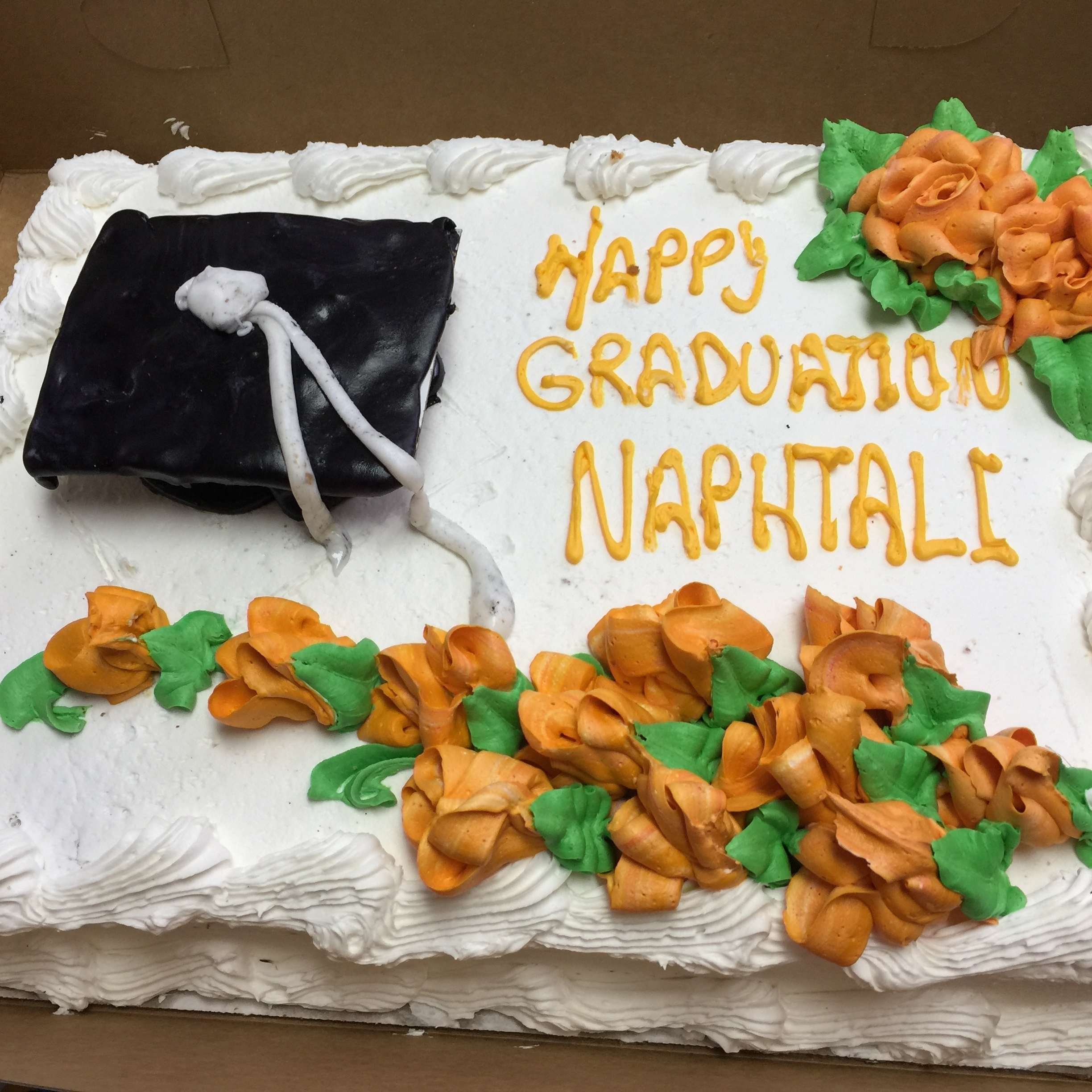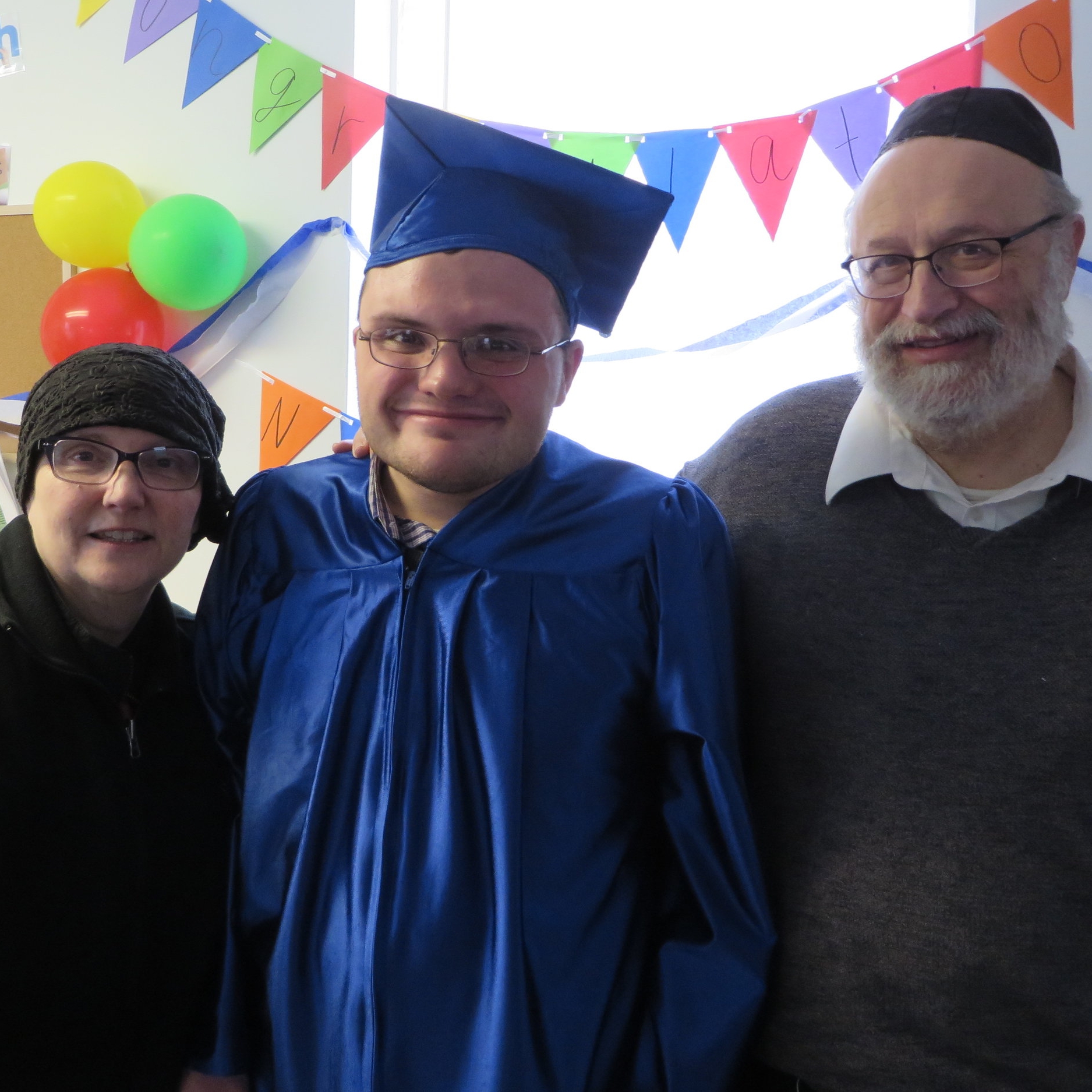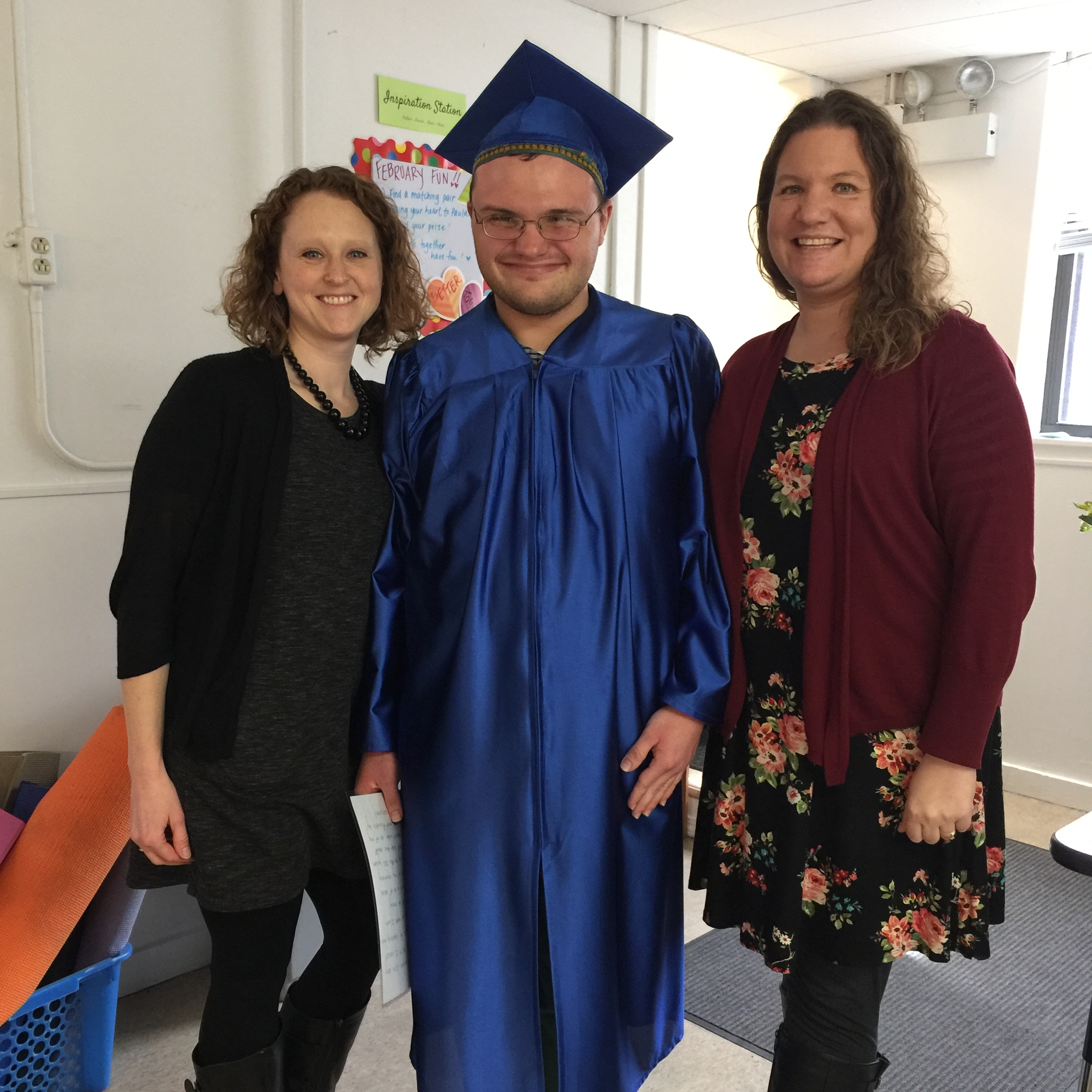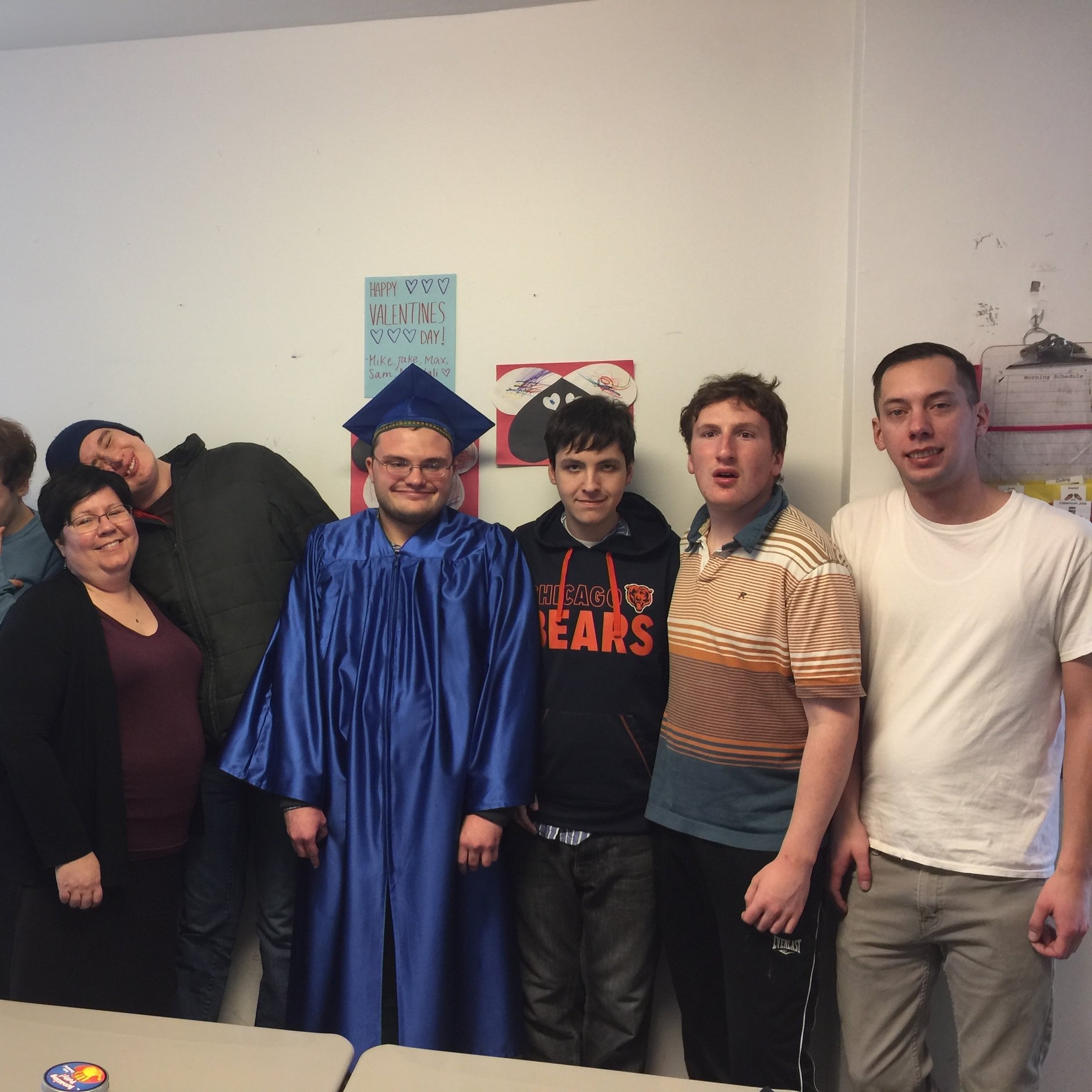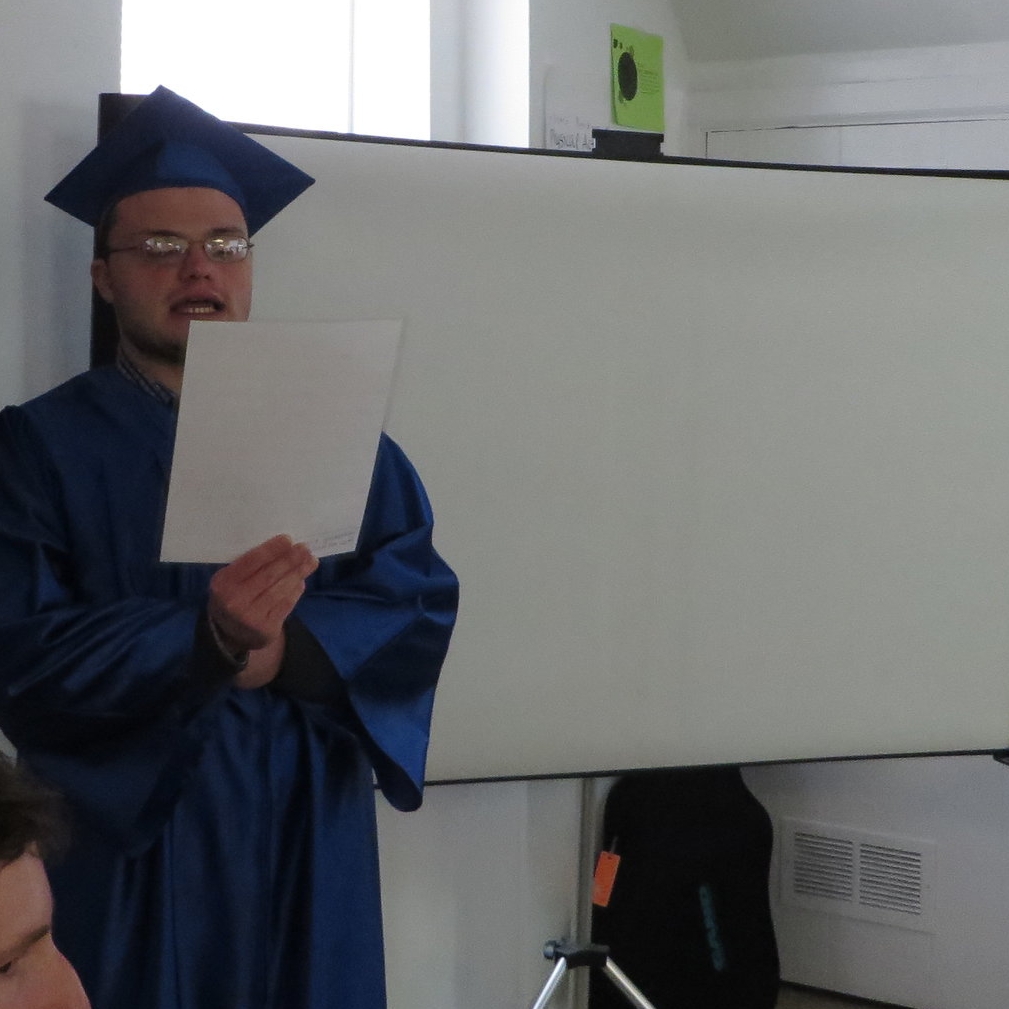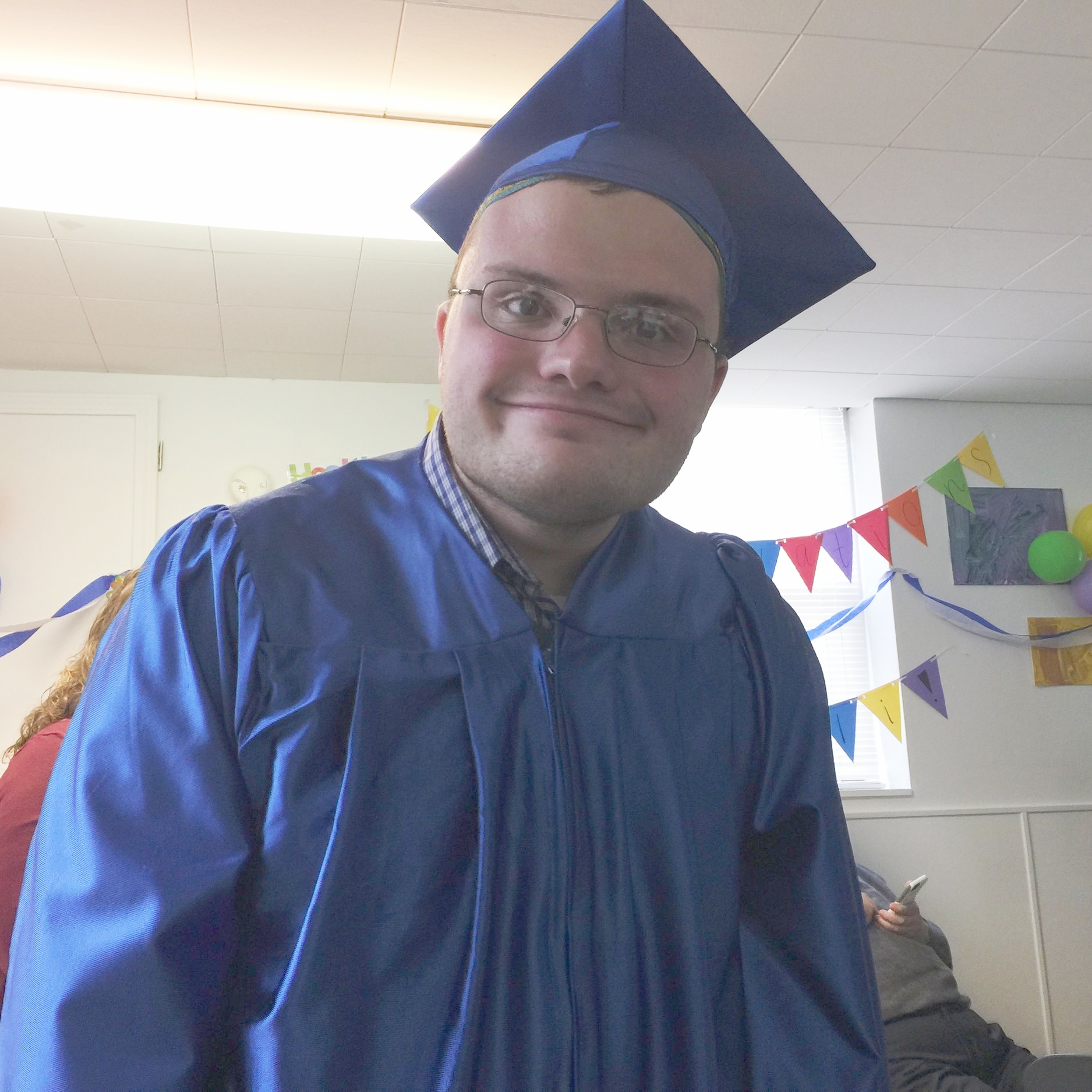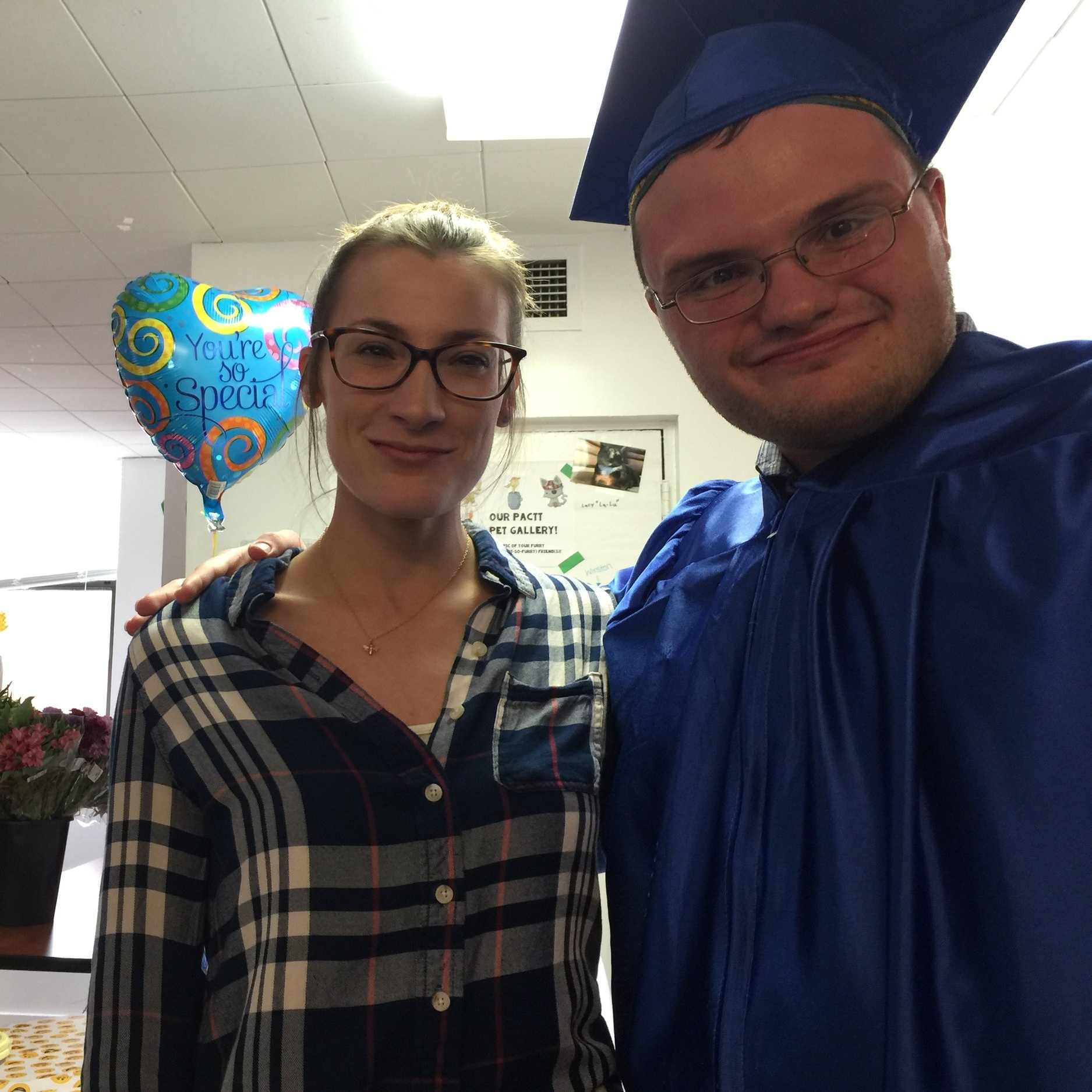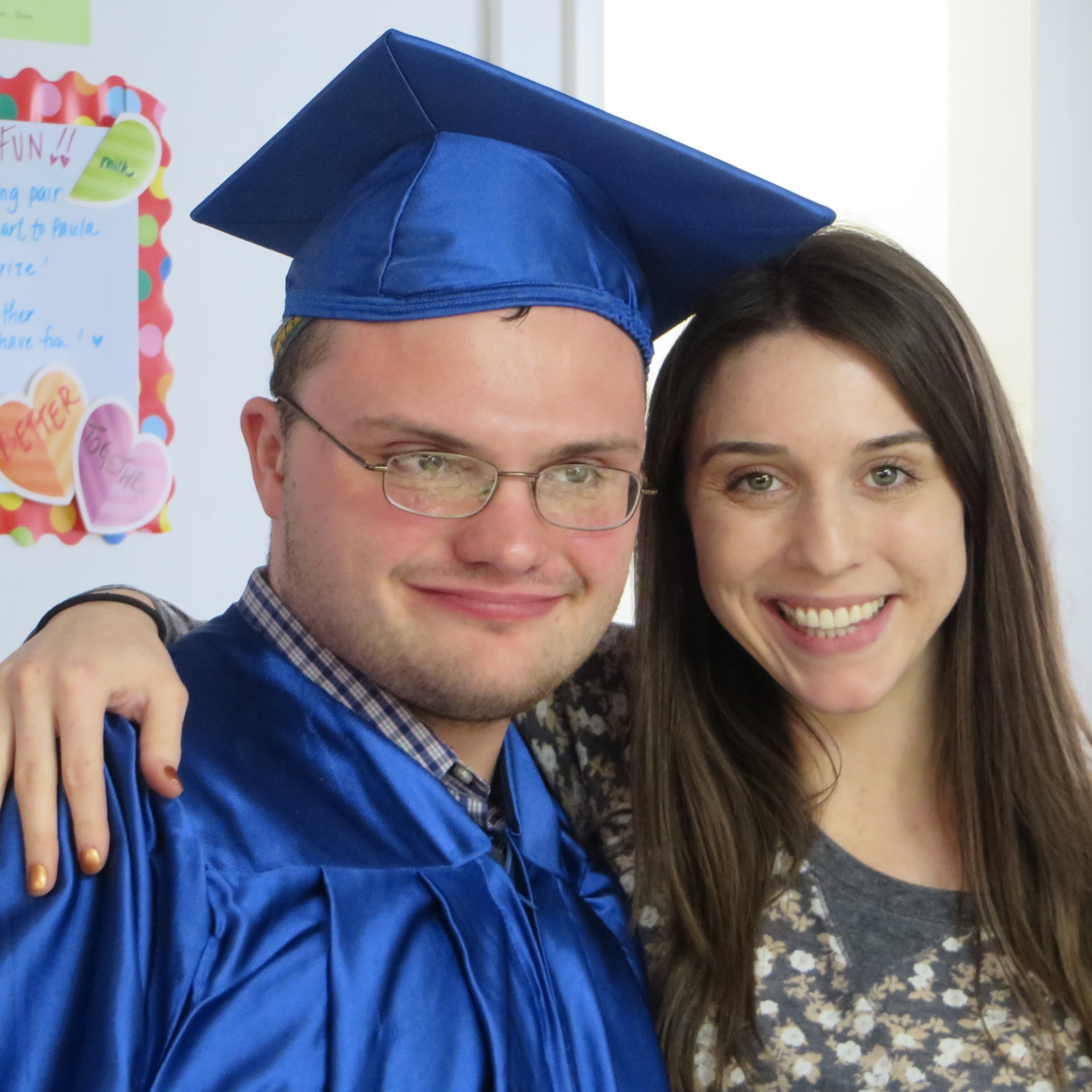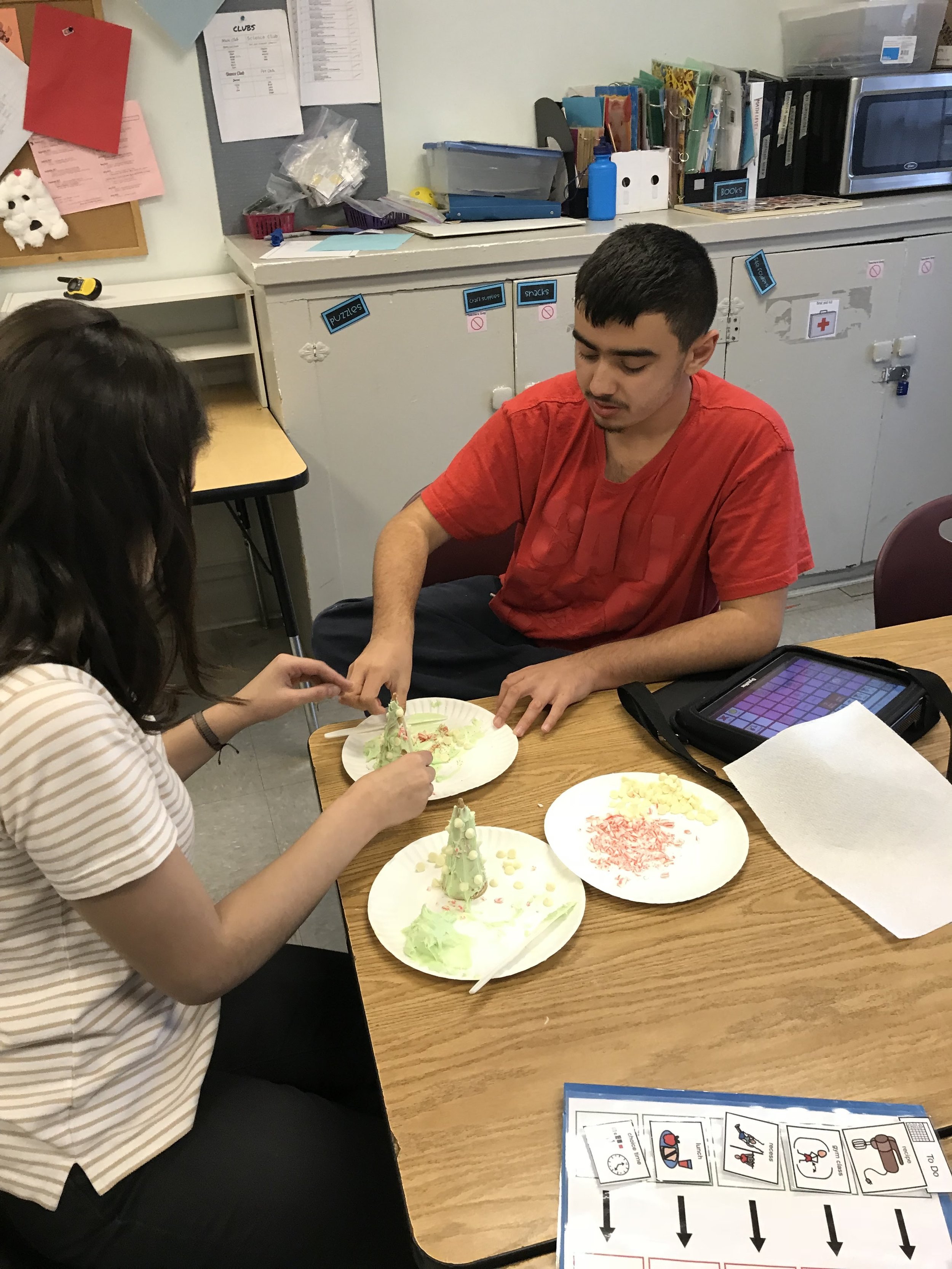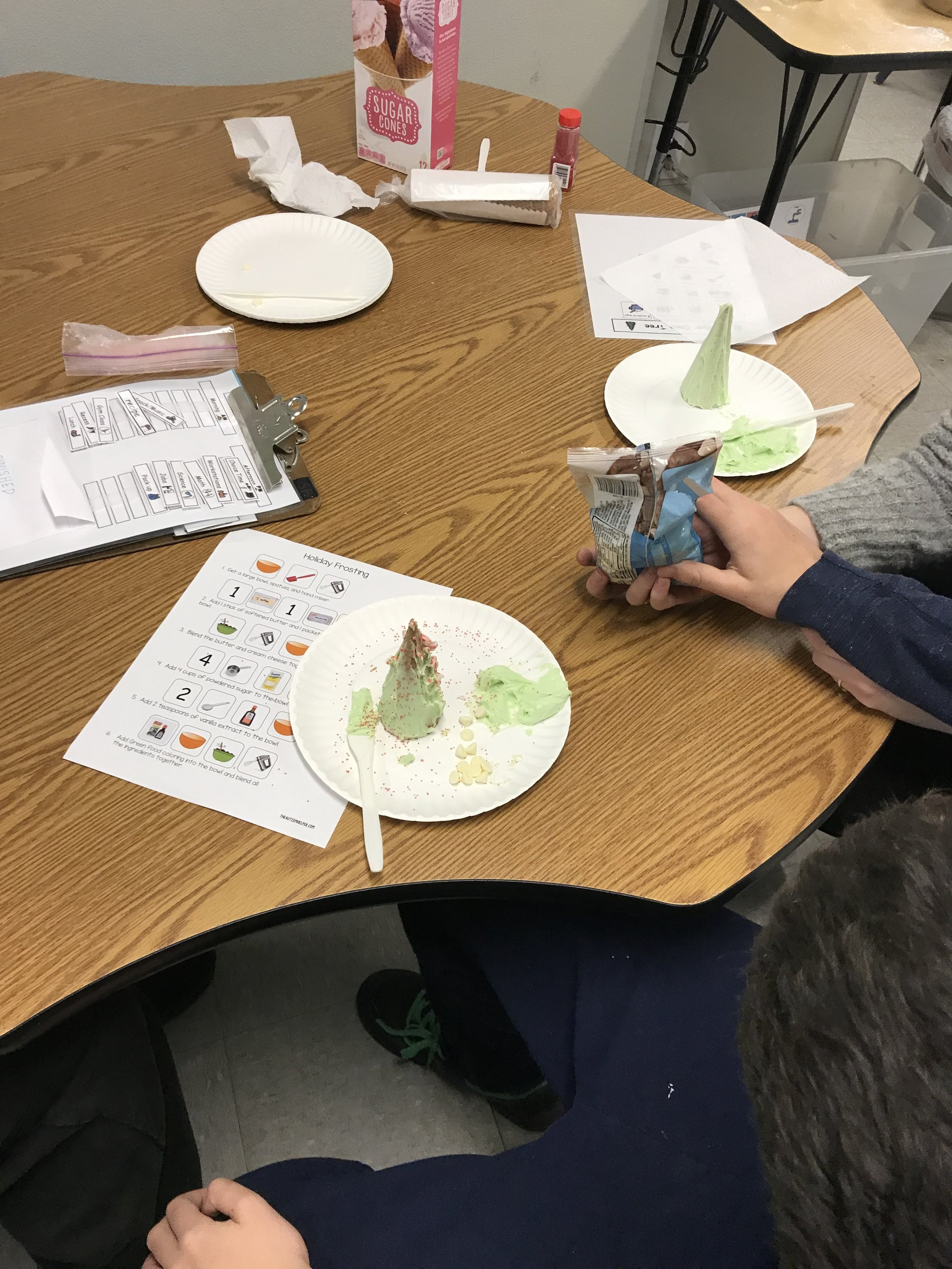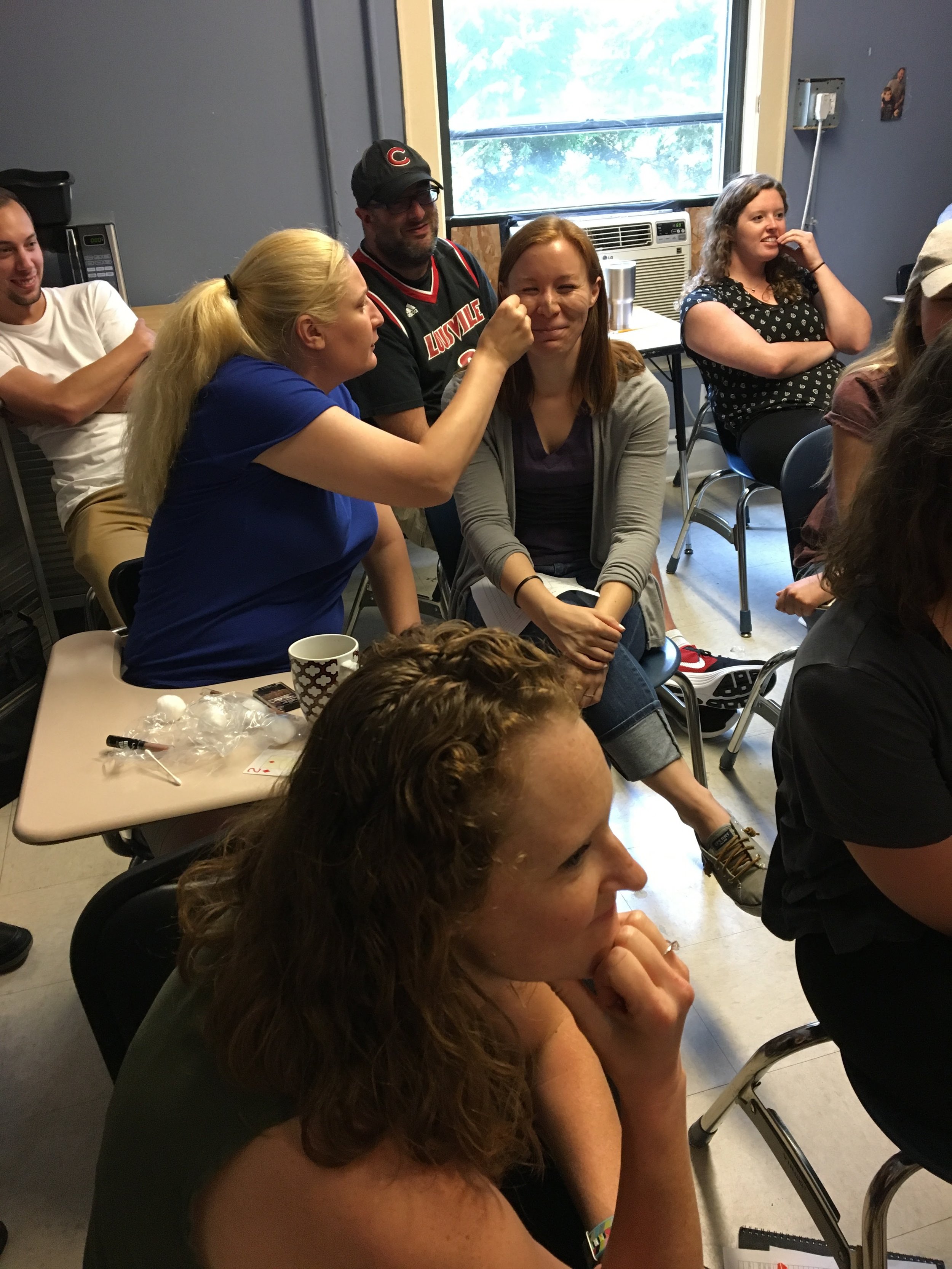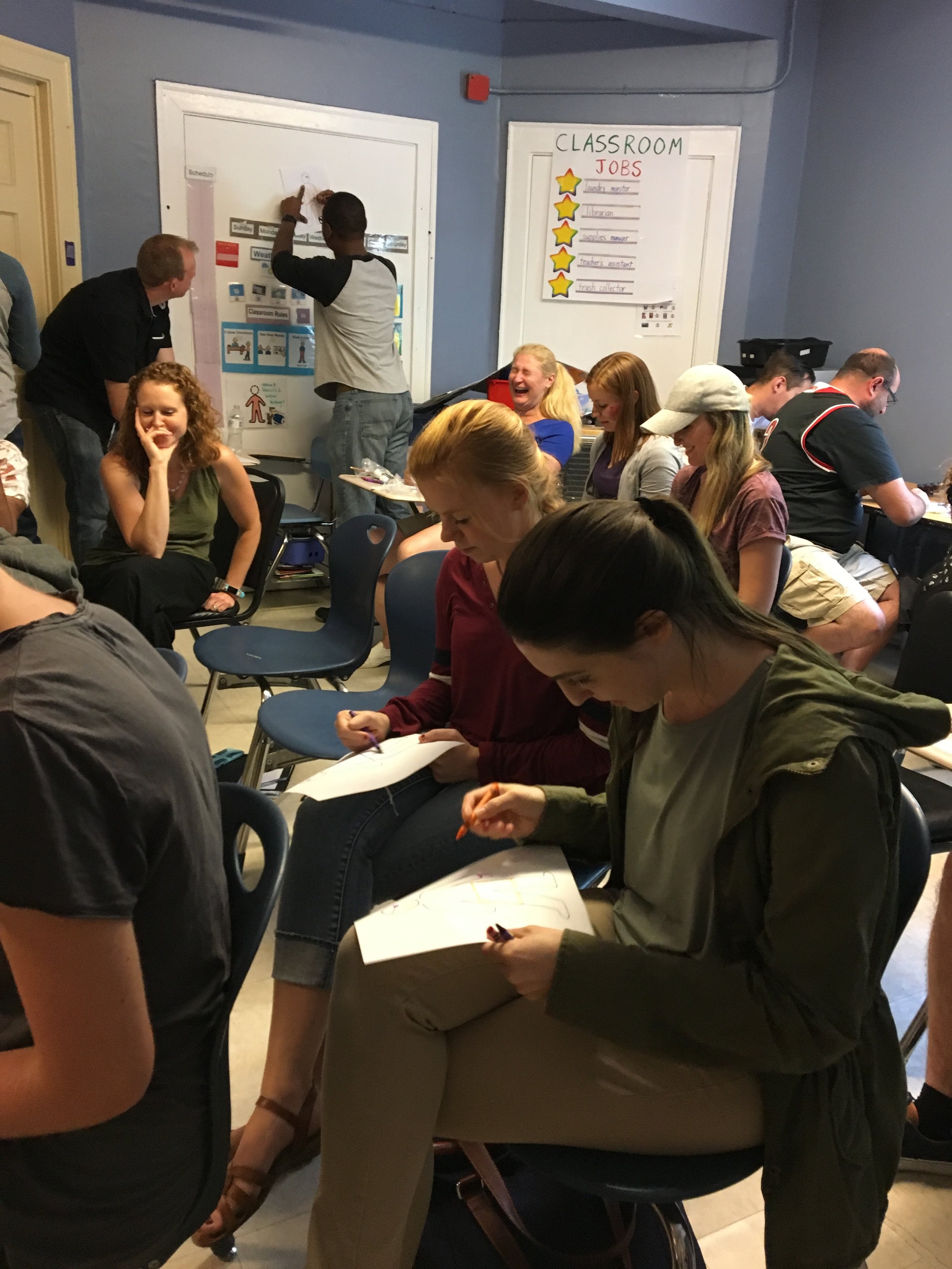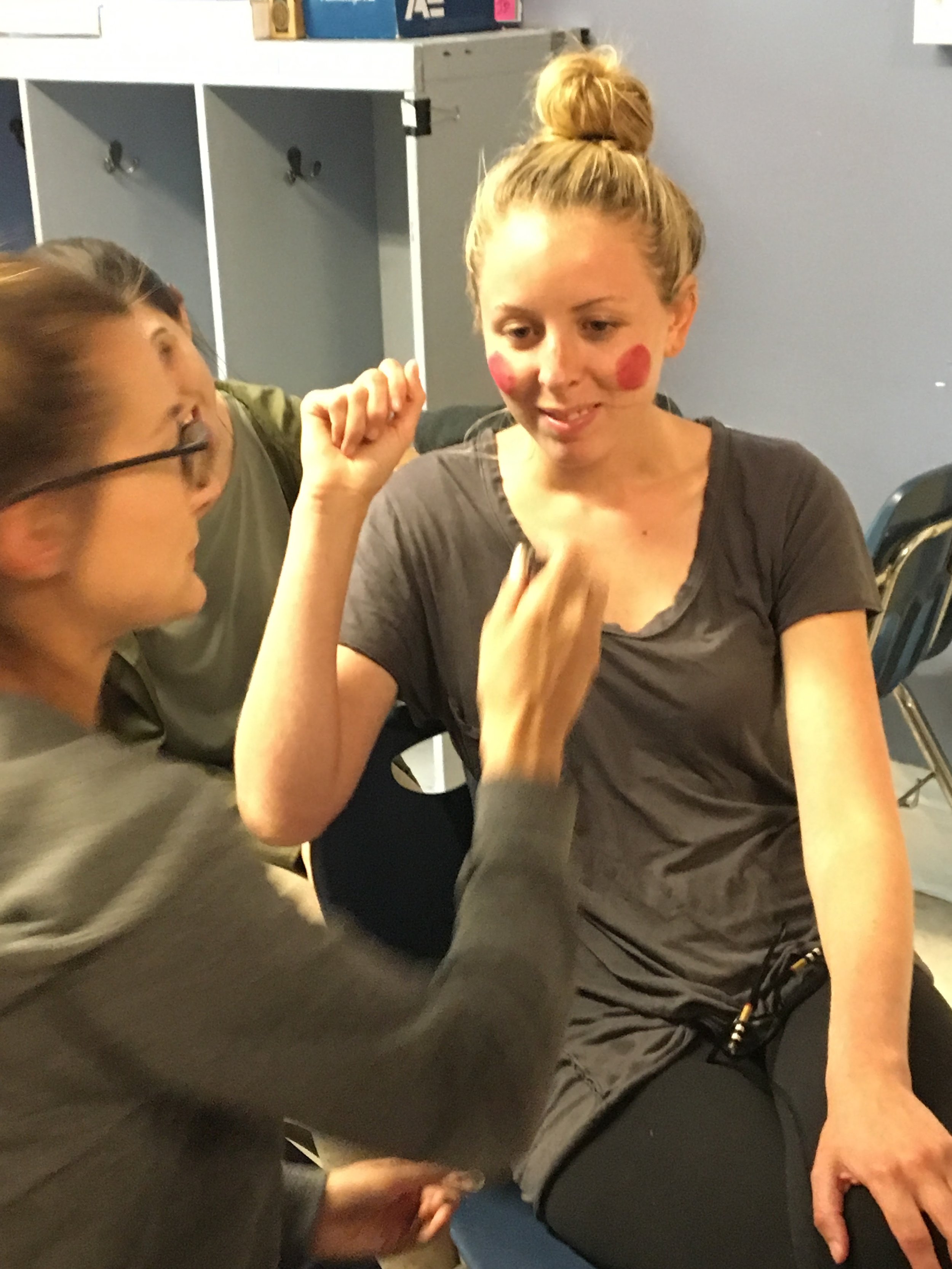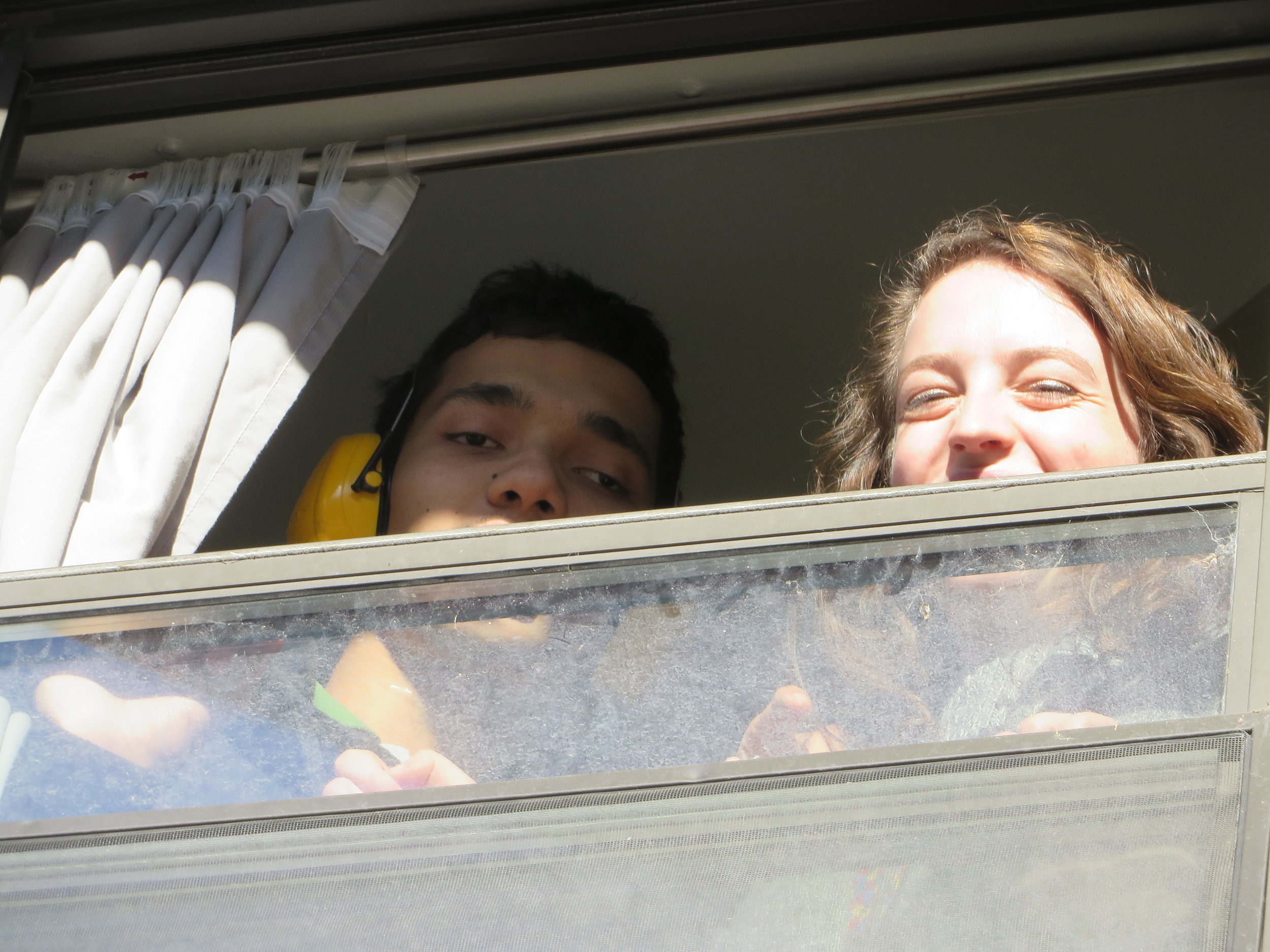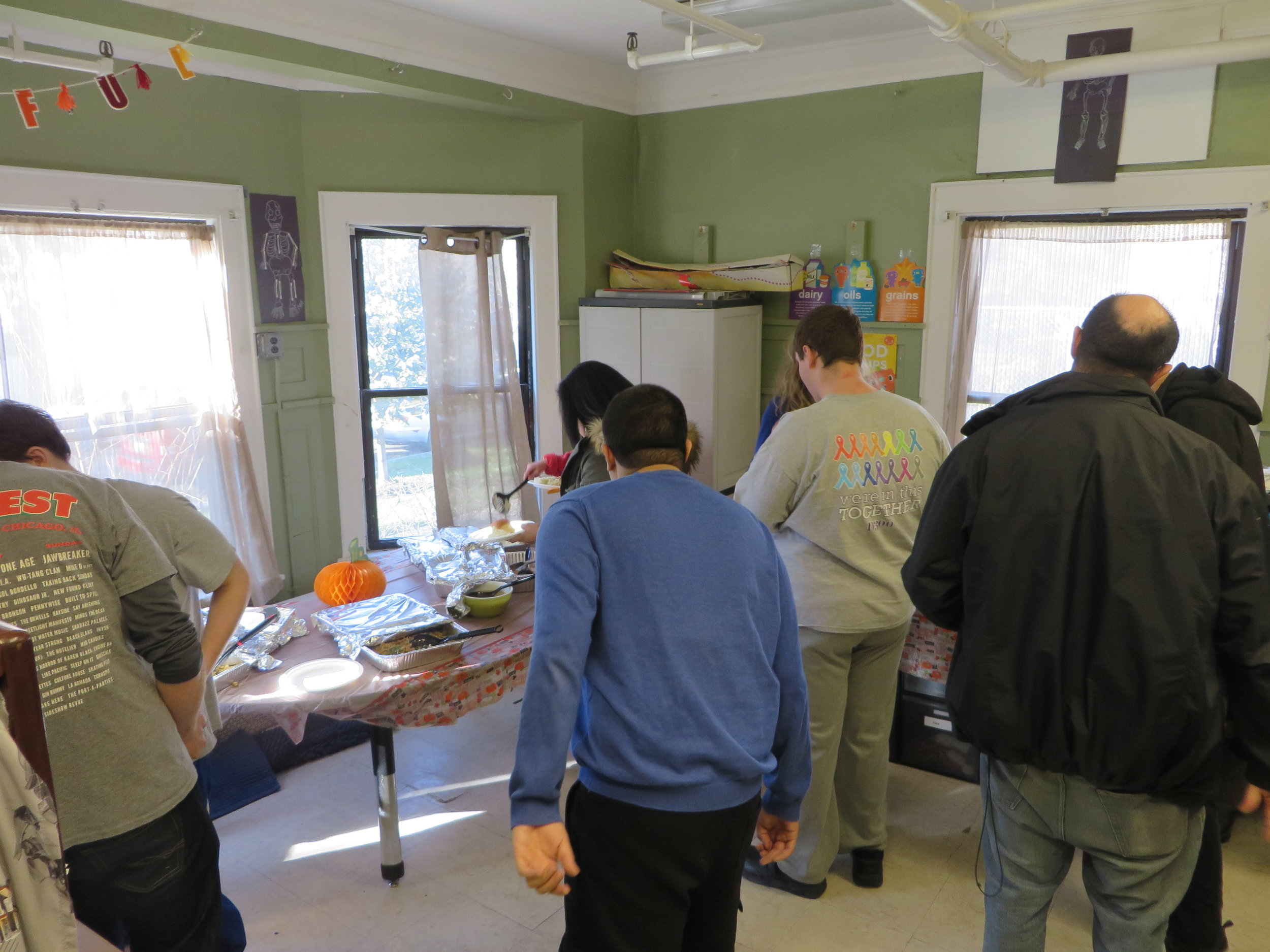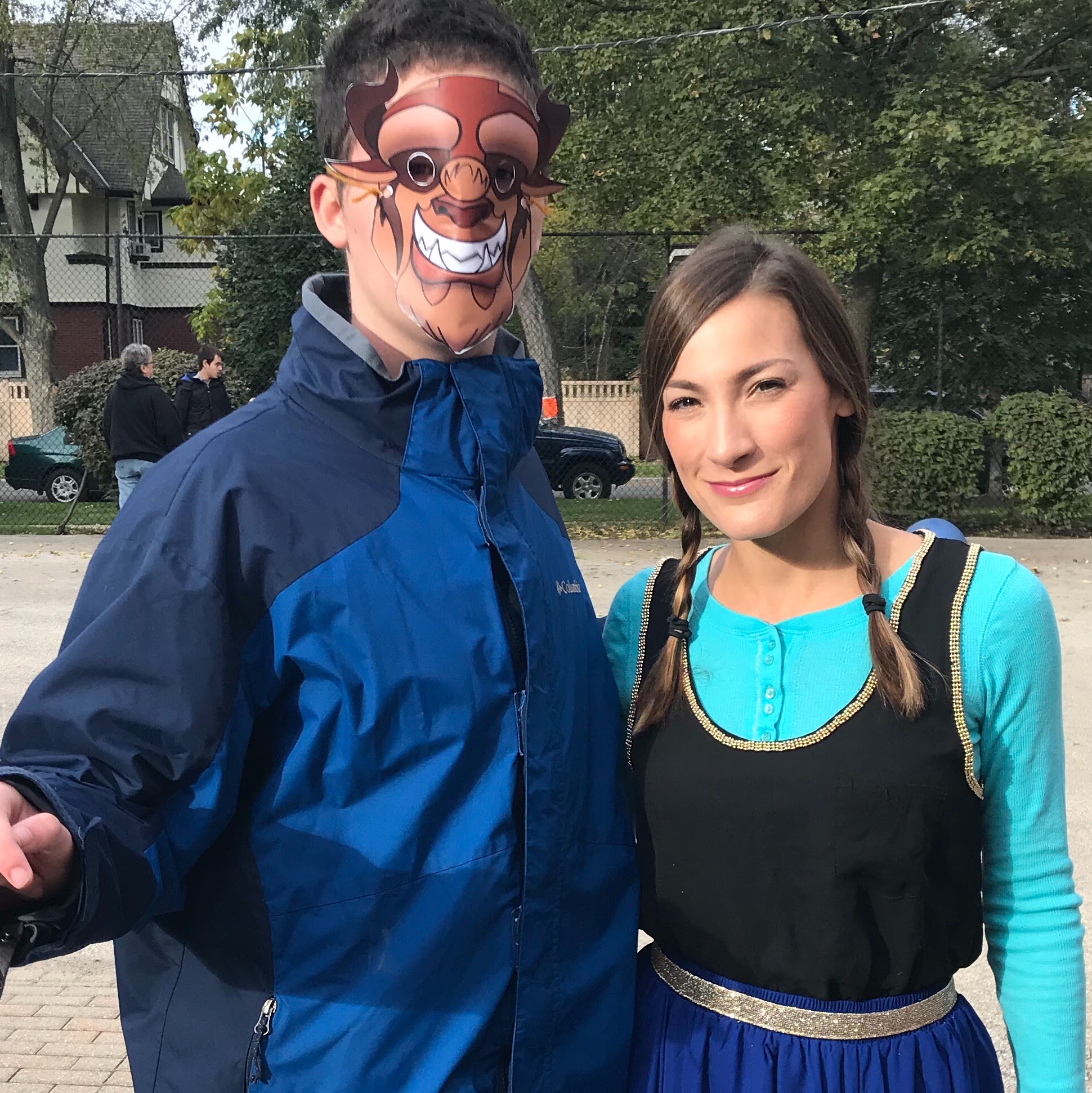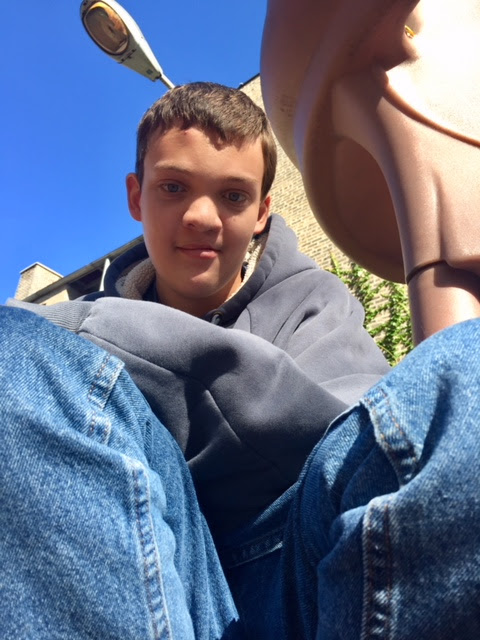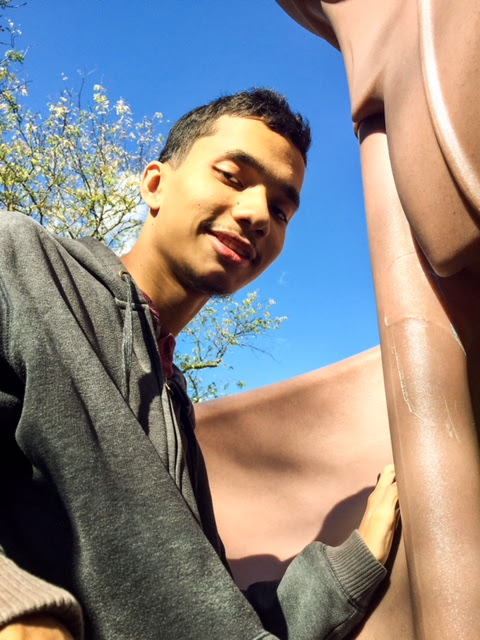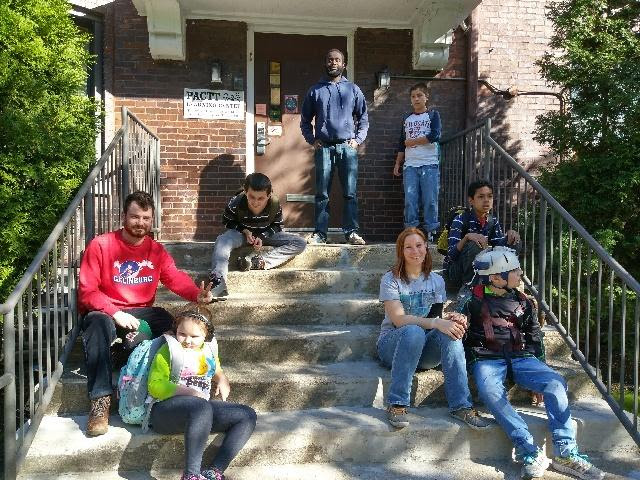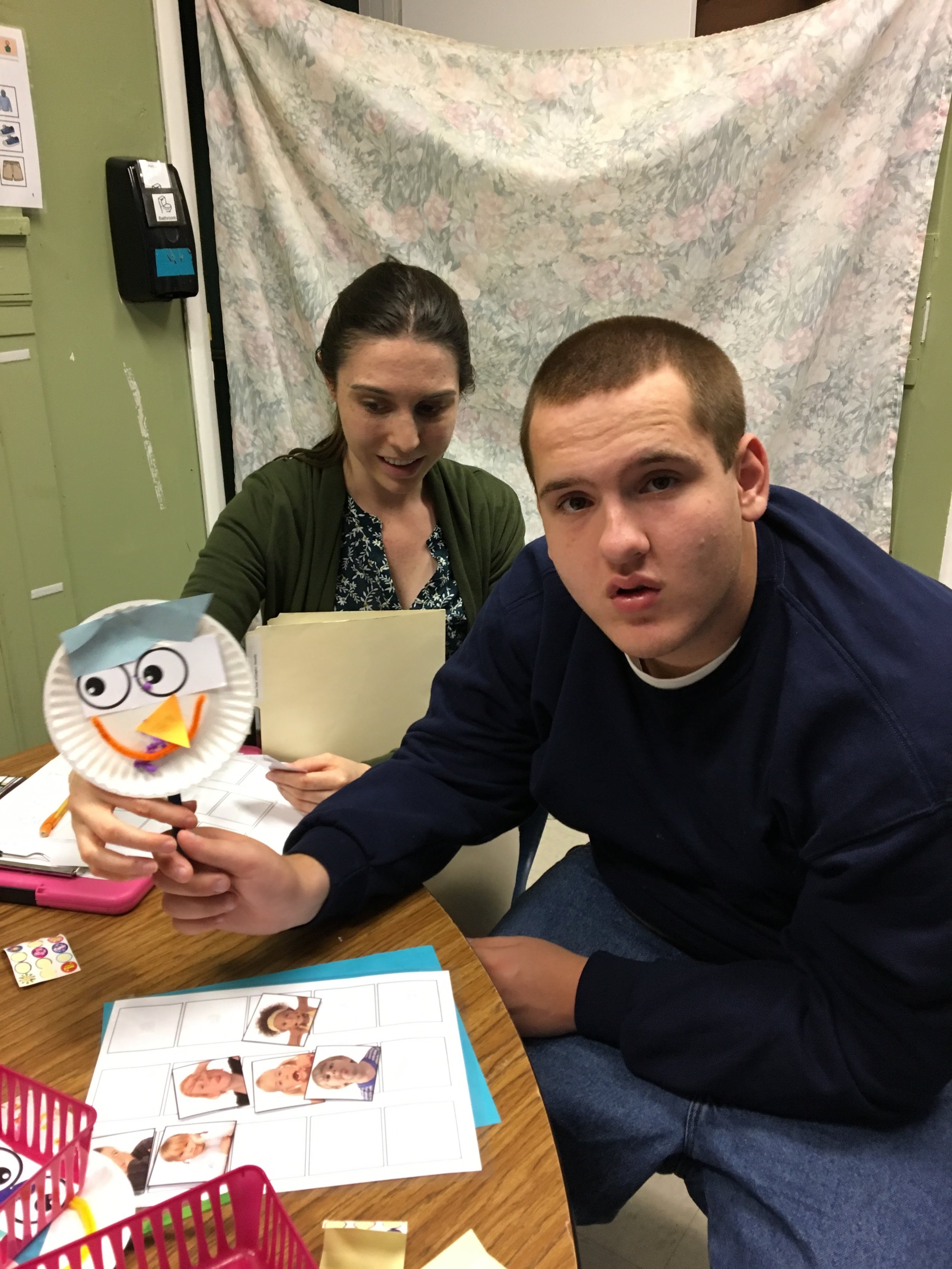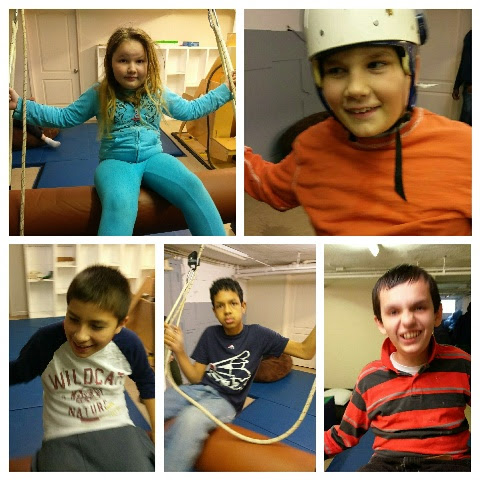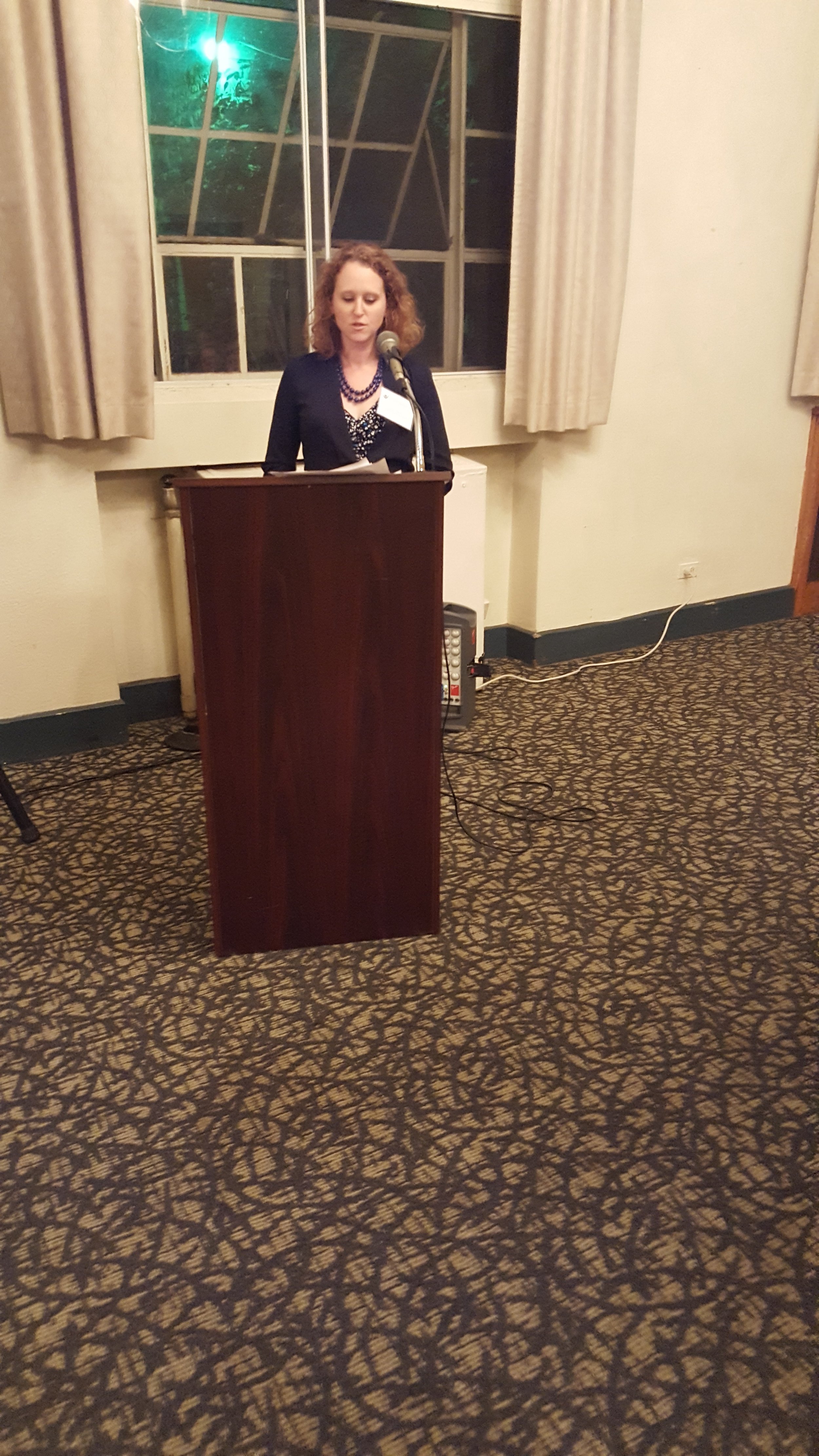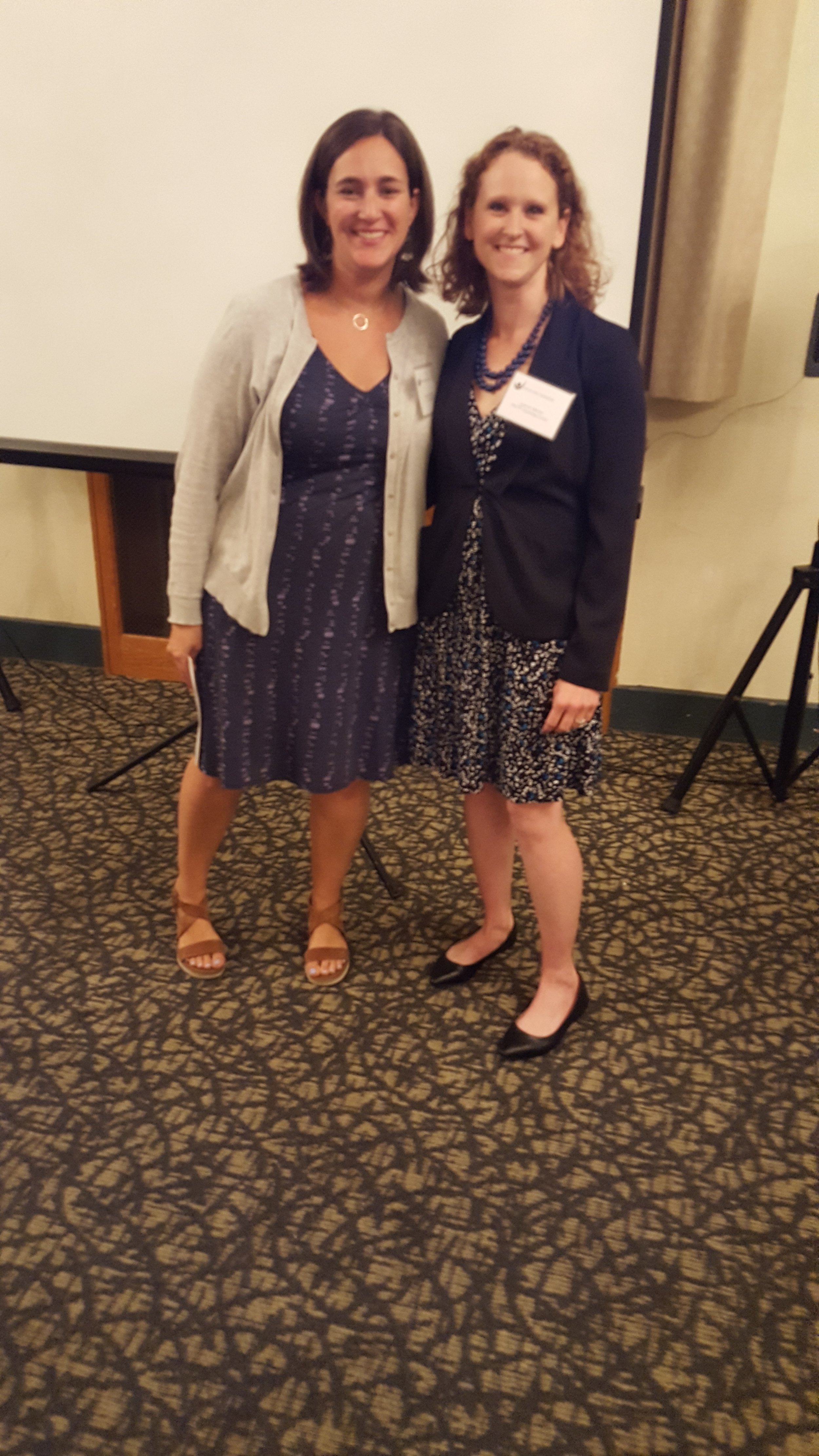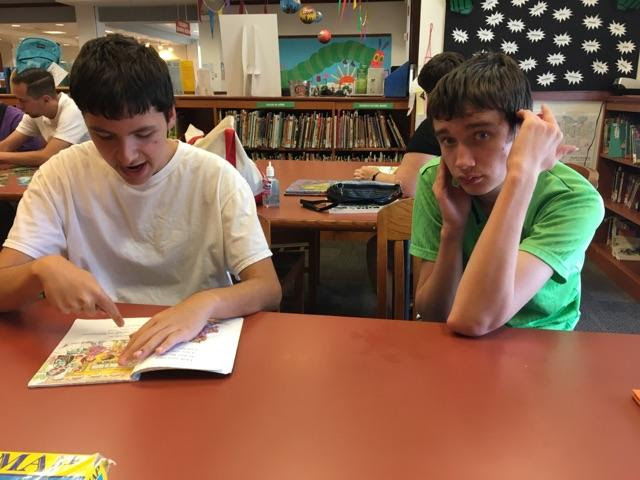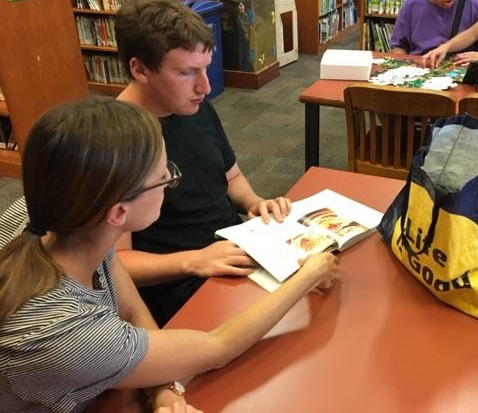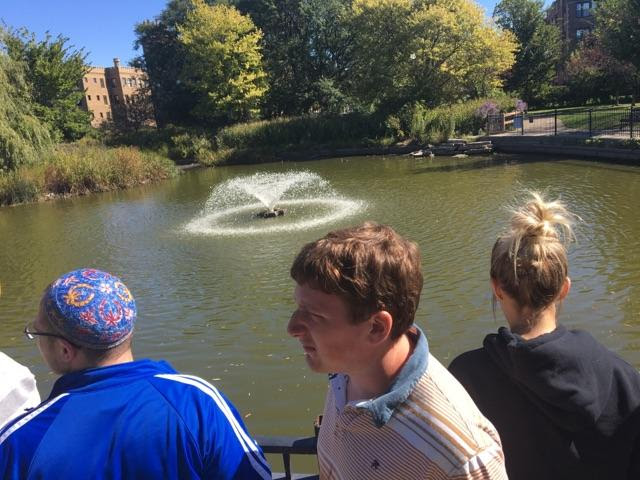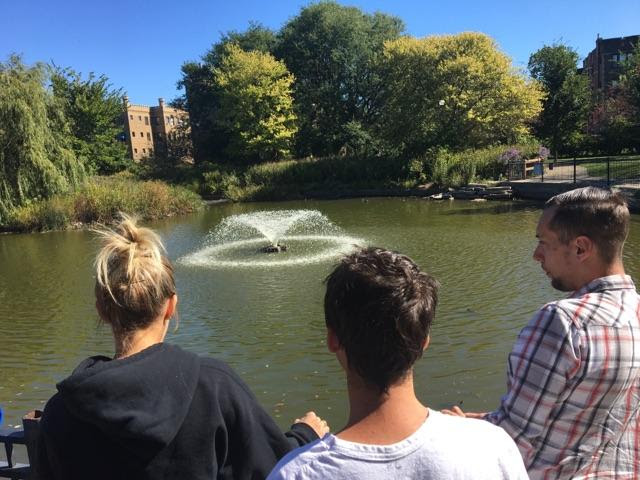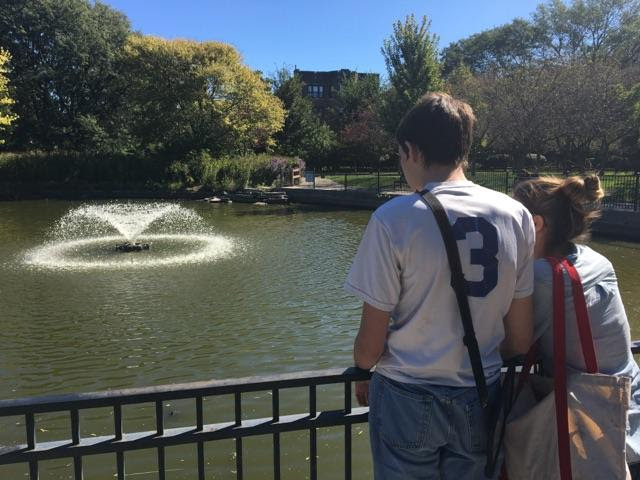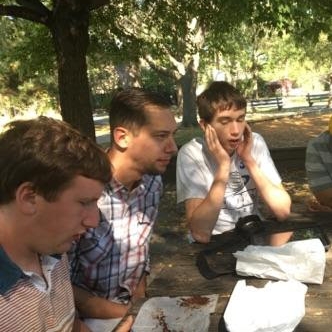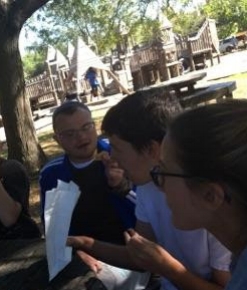From our favorite sports teams and classroom colors to our craziest hats (and hair!), Spirit Week always brings smiles to our building in the middle of the gray days of March.
Focus on Professional Development: Video Modeling
Thanks to a generous grant from the Special Kids Foundation, our school team was able to participate in a fully-funded video modeling training this month. The training was led by Alissa York, educational consultant, who recently retired from the Naperville-area school districts, where she trained teachers and worked closely with students, to implement video modeling within their classrooms.
Why Video Modeling?
- Video modeling has been identified by the National Professional Development Center on Autism Spectrum Disorders as an evidence-based practice for teaching students with autism.
What is video modeling?
- With a video model, students follow a video prompt to complete a task. Have you ever searched YouTube for a video on how to do something, because it's easier to do if you see someone else do it? Well, it's that same idea. The video can be of the student doing the task, of someone else doing the task, or completion of the task from a first-person perspective.
Why is this important?
- With a video model, students will rely less on staff support for completion of tasks - especially activities of daily living and vocational tasks. The videos can be loaded onto their personal devices, for watching at job and volunteer sites - and at home!
But wait! PACTT classrooms don't have the technology to implement this kind of thing!
- Ah, there's the bonus of the grant funding! Each of our classrooms will receive at least two (possibly more) brand new iPads, to support the initiative ... and to use for additional educational supports throughout the students' day.
Sensory Adventure
This semester, we worked with a design class from DePaul University's Theatre School, as they designed and built a sensory exploration experience. The best part? Once the experience was complete, several PACTT school students and staff had the opportunity to explore the space. Doesn't this look like fun????
Congratulations, Graduate!
This week, we celebrated a graduation of one of our Transition students. We are proud of him and all his accomplishments!
Focus on PD: Physical Fitness
Thanks to a generous grant, we were able to invite David Geslak from Exercise Connection to work with our team on strategies to incorporate Physical Fitness more deliberately into our programming. The grant covered the cost of the two-session training, curriculum and fitness equipment including medicine balls, foam rollers and more. Soon, Nora our awesome Occupational Therapist will be coordinating weekly fitness sessions with each classroom to help get things rolling.
For more information on Exercise as an evidence-based practice for individuals with autism, visit the National Professional Development Center on Autism Spectrum Disorders.
And ... we're back!
Winter Break is here!
Holiday fun!
Our teachers and students have enjoyed a flurry of holiday fun these last few weeks - from a door decorating bonanza to today's cookie-frosting, cocoa-making, sensory-snow-playing and movie-watching fun.
Our door decorating contest took to Facebook to help us decide. The winners? High School South (the fireplace) by a nose ... followed by our Buddy the Elf door on High School North.
Happy Holidays from our crew to yours!
Our school crew (most pictured here, in their holiday gear), wish you all a Happy Holidays!
Holiday fun with our Francis Parker friends
We had a special visit today from our friends at Francis Parker High School! They joined us for fun holiday crafts, and helped us make our wish lists.
We're always learning
Ever wonder what we're doing when we have those early dismissal days each month? Well, our knowledge-hungry team is learning how we can be even better! Each year, we set a program goal related to a research-based or promising practice in the autism field. Last year, we spent a good chunk of the year learning about elements of Structured Teaching (from TEACCH - see www.teacch.com for more info). This year, one of our program goals this year is for our team to learn more about ways to incorporate fundamentals of ABA (Applied Behavior Analysis) in the classroom. This semester, we've focused on Task Analysis and Discrete Trial Training.
Discrete Trial Training is a way of presenting short, quick tasks, within a clear (1) direction - (2) response - (3) correction / praise framework. It is most commonly used to teach basic rote skills like matching, or identification of fundamentals like colors, shapes, numbers, letters, sight words, etc. Often, this is what is most associated with ABA - but it's not ALL of ABA.
Task Analysis is a way to break down a complex task into smaller, more manageable pieces. We practiced and laughed (a lot), as we taught each other to put on makeup, build ice cream sundaes, and draw pirates (the pics above show some of the fun!). One of the things we reiterated was the importance of being specific when writing the TA, and consistent when using it - that way, everyone is teaching the student to do the task the same way ... which increases the likelihood of learning! We use these for more complex task sequences - like brushing teeth, washing hands, tying shoes, making a purchase, taking out the trash, etc.
For more information on Task Analysis and Discrete Trial, check out these info sheets from the National Professional Development Center on Autism Spectrum Disorders (NPDC):
Happy Thanksgiving!
Thanks to everyone who helped prepare this year's feast - and thanks to all our families who helped us celebrate!
Happy Halloween from PACTT!
October Roundup
A collection of moments from October:
Let the pumpkin fun begin!
PACTT's elementary class started the Halloween festivities early with a pumpkin carving sensory experience:
Art + Sensory + Social / Emotional Learning = Clubs Time!
Once a week, PACTT students have a chance to choose their own adventure. Our Clubs block allows students to choose from art, music, dance, and science. Students are sorted according to their choice, and benefit from spending time with students and staff from other classrooms. Clubs time also gives our therapists and paraprofessionals opportunities to lead activities.
Here, our Occupational Therapist and Speech Therapist join Art Club for an activity that combined an art project (fine motor and sensory), language (emotion words, body parts), and social / emotional learning (labeling emotions). The students? They just thought they were having fun. And isn't that the best kind of learning?
Sensory / Motor: Elementary Class
Our elementary classroom enjoyed a whole-class visit to our sensory motor space - including turns on our recently re-installed suspended swing.
Special thanks to Special Kids Foundation!
(Above, left) PACTT Transition Specialist Lauren Mucha accepts the Special Kids Grant at the award ceremony last week.
(Above, right) Special Kids Board Vice President Lauren Litchfield, with Lauren Mucha.
We send a special THANK YOU to the Special Kids foundation for their generous grant to our children's programs. Because of their generosity, we will be able to implement Video Modeling training for our teaching team AND purchase new equipment and apps for our classrooms.
Transition Specialist Lauren Mucha (pictured here) represented PACTT at the grant ceremony last week. We can't wait to get things rolling!
More about Video Modeling, from Lauren's acceptance speech:
Many of our students need intensive supports to carry out activities like personal hygiene, food preparation, social skills, and job tasks. To learn a skill like brushing teeth, a student might need a teacher to stand next to them and to point to the faucet so that the student turns on the water and wets the toothbrush, to point to the toothpaste to remind the student to put it on the brush, and so on for each step of the task of brushing teeth. They might need a teacher to prompt them this way every time, and some students may take a long time to get to a point where they can perform the skill without any reminders.
This is where video modeling comes in. Instead of a teacher prompting a student through every step of a task, the student can watch a video on an iPad and follow along to perform the steps. The video can be used across settings, so the student who learns to brush his teeth using the video at school can do it at home too. Video modeling can be used to teach skills students need to take care of themselves, to interact and communicate with others, and to work in meaningful employment in the community. Research shows that this is an effective strategy for teaching these types of skills.
To learn more about the use of video modeling for students with autism, visit:
Exploring our Community: Rogers Park Public LIbrary
Indian Boundary Park
Our Transition Class took advantage of the weather, and explored Indian Boundary Park.
























